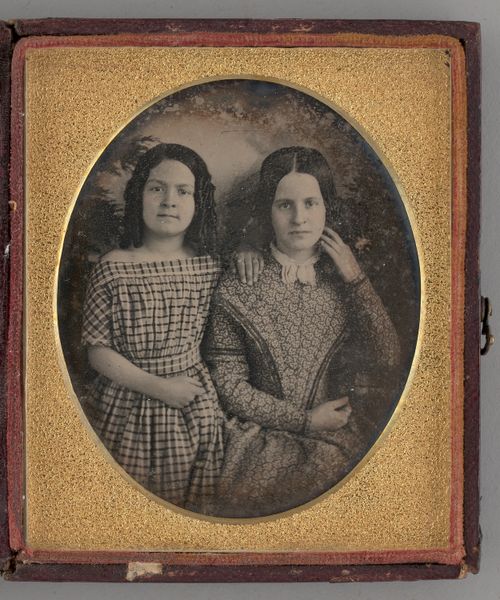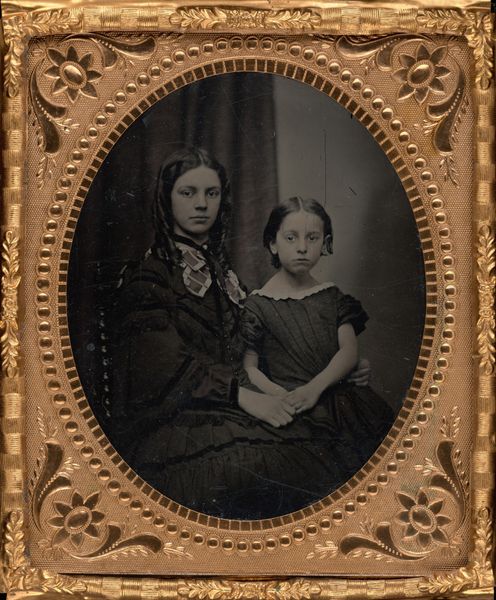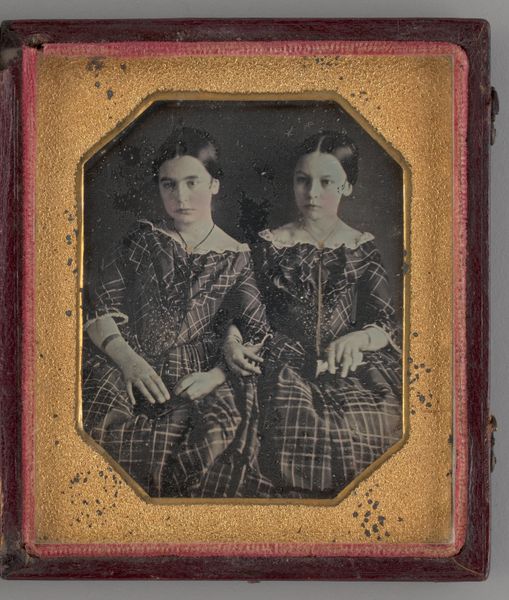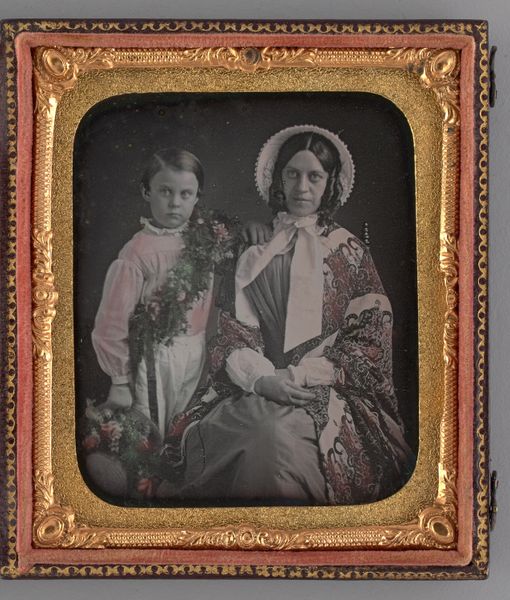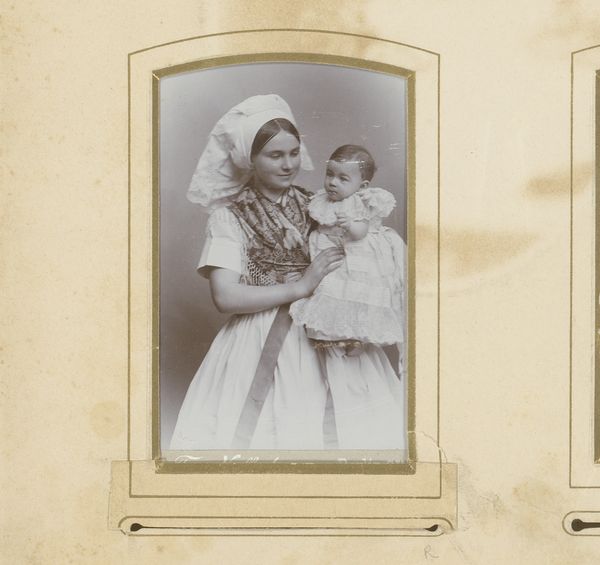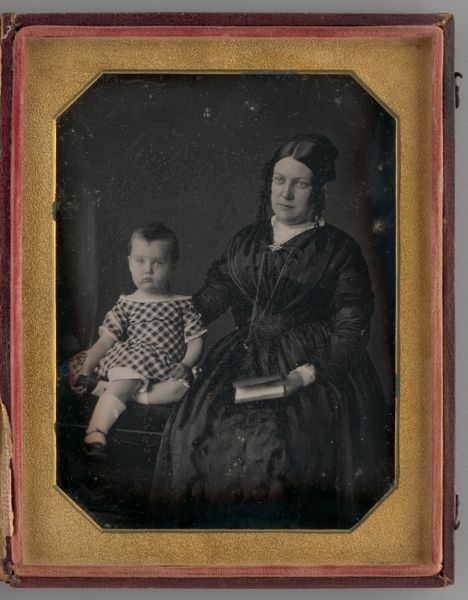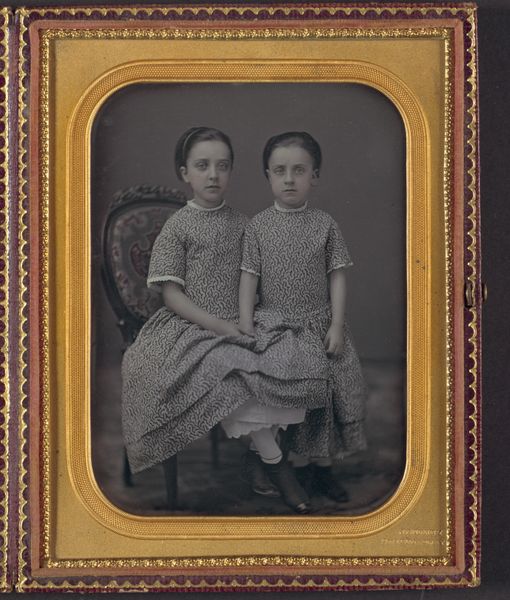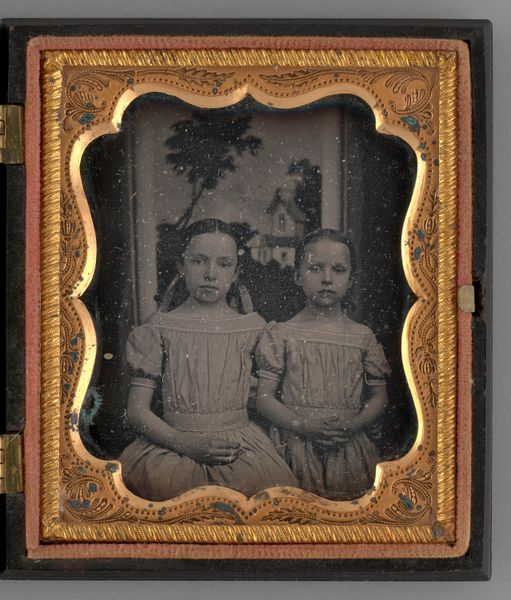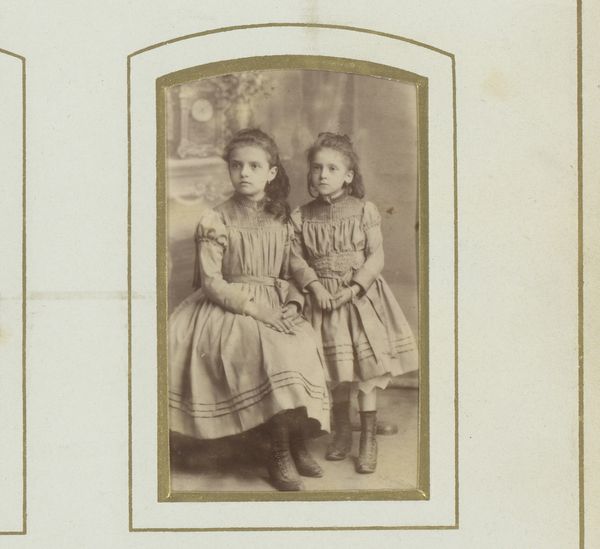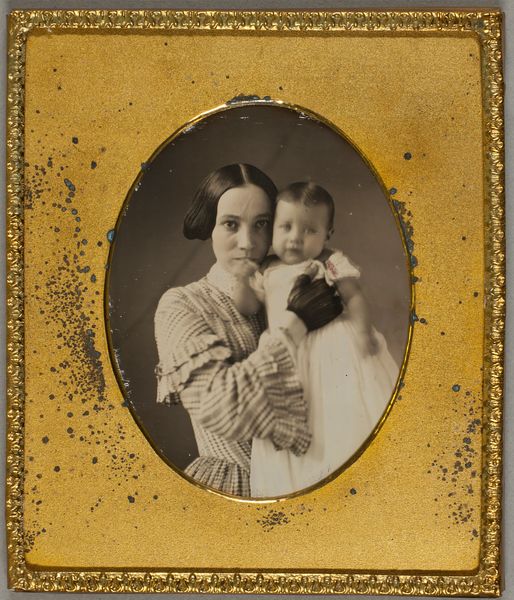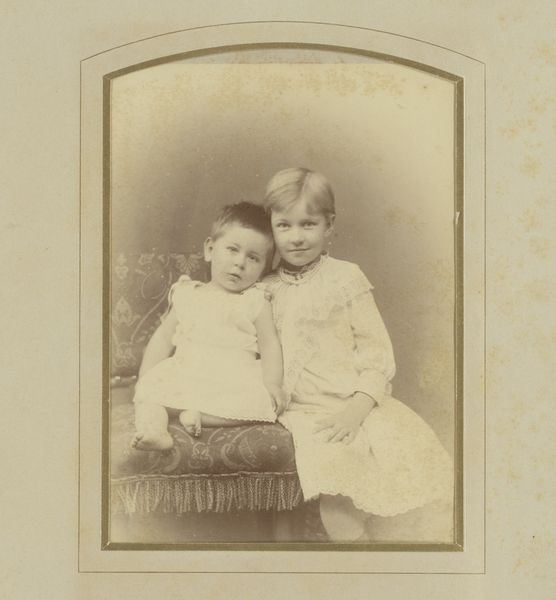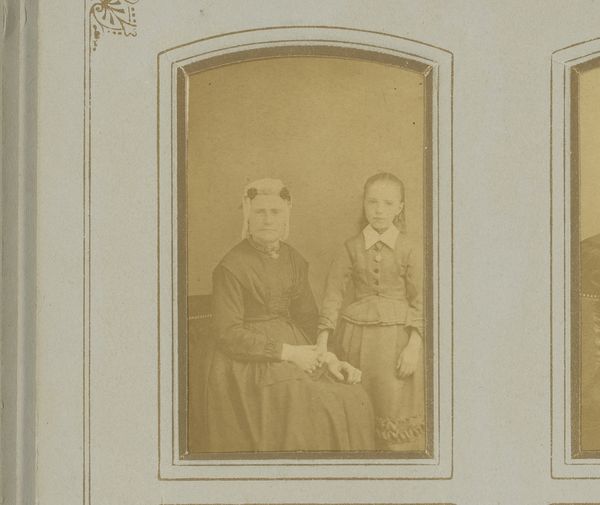
daguerreotype, photography
#
portrait
#
16_19th-century
#
daguerreotype
#
photography
#
geometric
#
romanticism
Dimensions: 8.2 × 7 cm (3 1/4 × 2 3/4 in., plate); 9.1 × 16 × 1 cm (open case); 9.1 × 8 × 1.5 cm (case)
Copyright: Public Domain
Editor: Here we have an 1847 daguerreotype, "Untitled (Portrait of a Woman and Girl)" by an anonymous artist, preserved at the Art Institute of Chicago. The expressions on their faces feel very serious. What can you tell us about this image? Curator: What strikes me is the very labor-intensive process required to produce this single image. Each daguerreotype was unique; there were no negatives for easy reproduction. We must think of the skilled labor, the silver-plated copper sheet, polished to a mirror finish, sensitized with iodine fumes... a truly alchemic process, beyond simple ‘photography.’ Editor: So, beyond just being a portrait, you see it as an artifact representing a whole mode of production? Curator: Exactly. And the societal implications are fascinating. Who were the patrons of this technology? Access was determined by economic and social class, wasn't it? How did this new, mechanical form of image production challenge existing artistic hierarchies like painting or miniature portraiture, think about that. Editor: It democratized image creation to some degree, yet remained quite exclusive. Curator: Precisely! Even the frame—the velvet and gilt— speaks to a rising consumer culture and the desire for durable, beautiful objects within a certain social strata. These photographic portraits would also shape social practices like creating images for rememberance and memorialisation, expanding image availability beyond the elite classes. The means of its creation dictates its value. What else do you observe about their clothing or what each holds? Editor: Thinking about it as a material object with a social life makes it so much more interesting. Thanks for the insight! Curator: Absolutely. By understanding the process, we can grasp the art's profound connection to 19th-century society and the evolving world of image production.
Comments
No comments
Be the first to comment and join the conversation on the ultimate creative platform.
